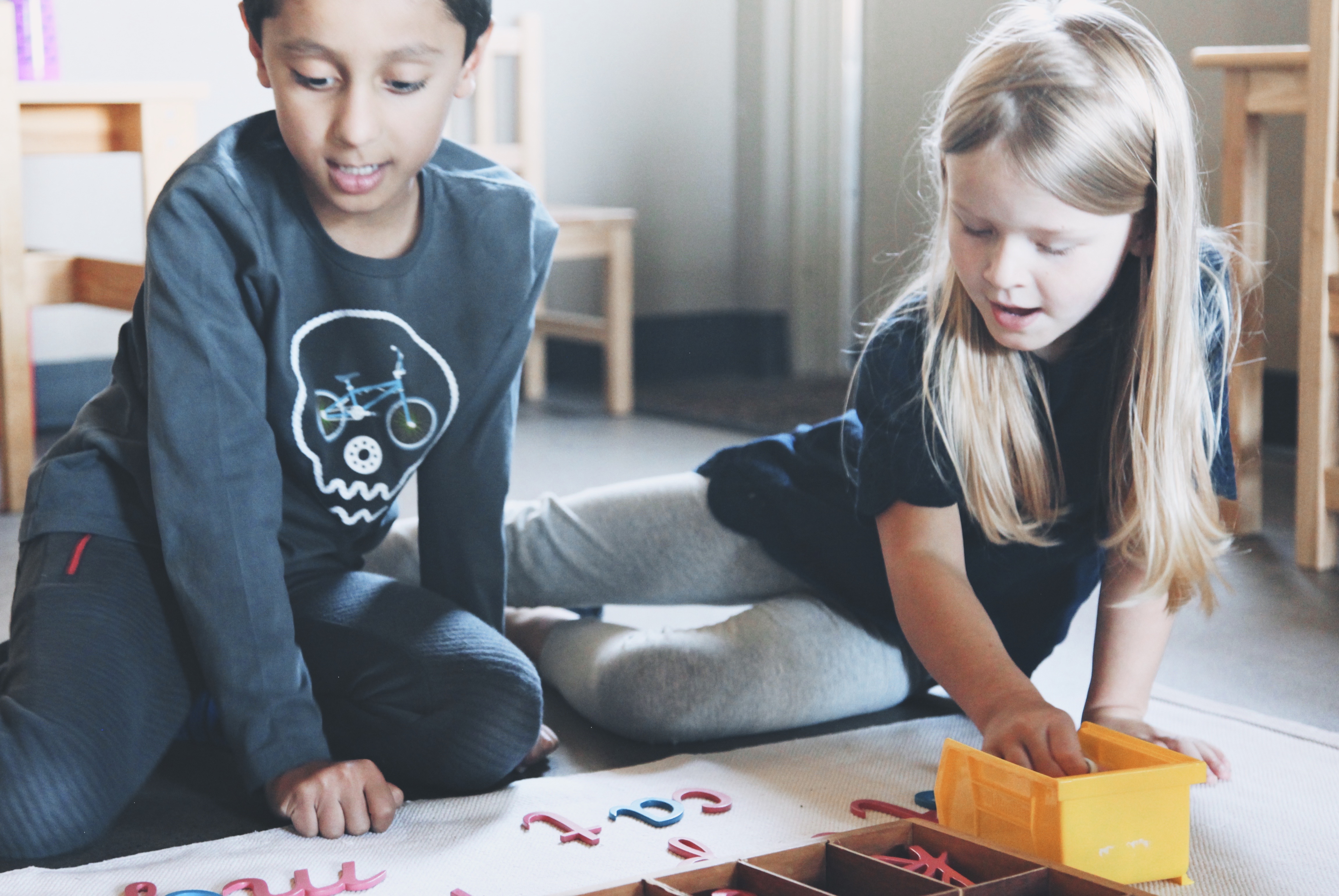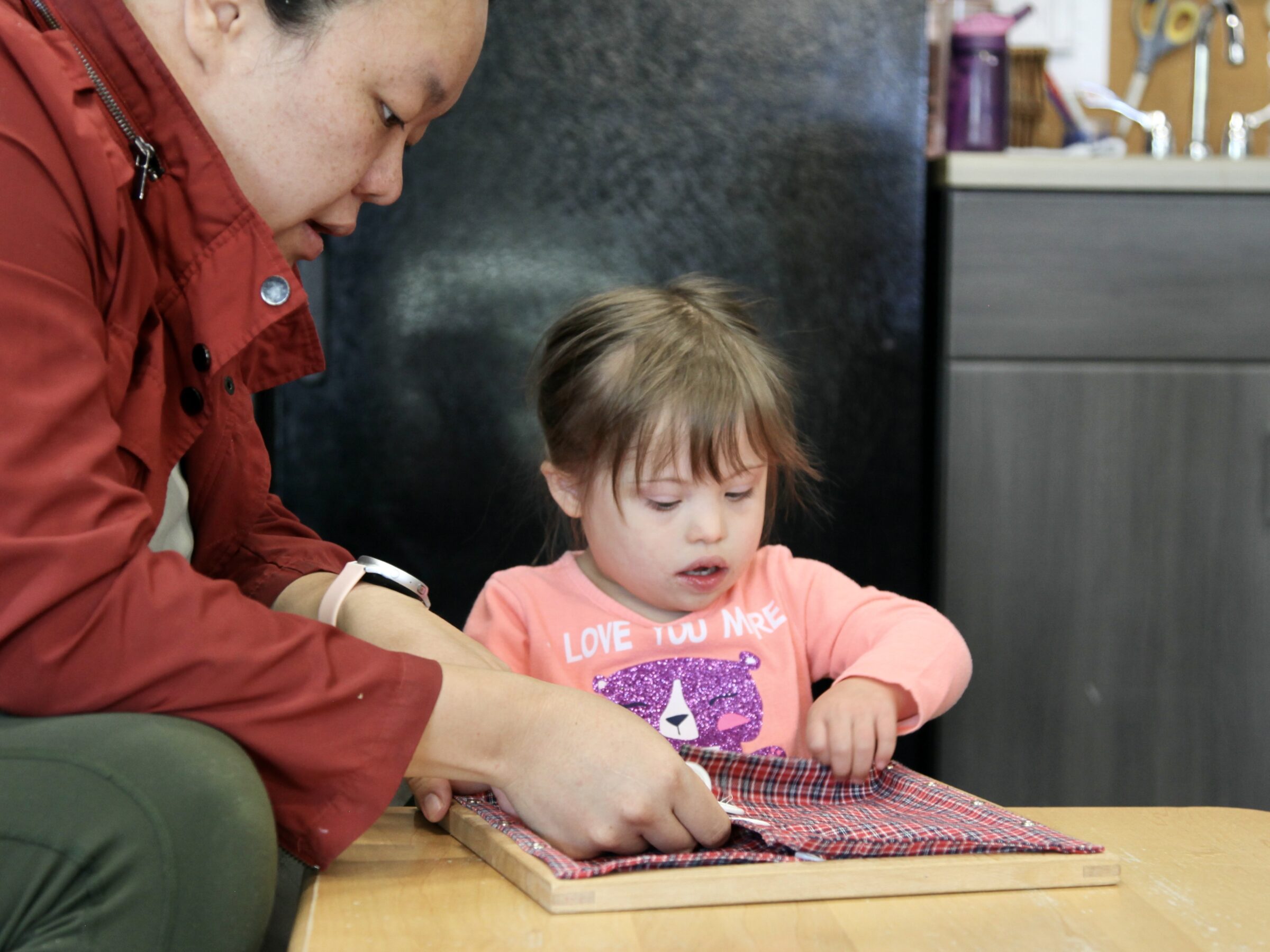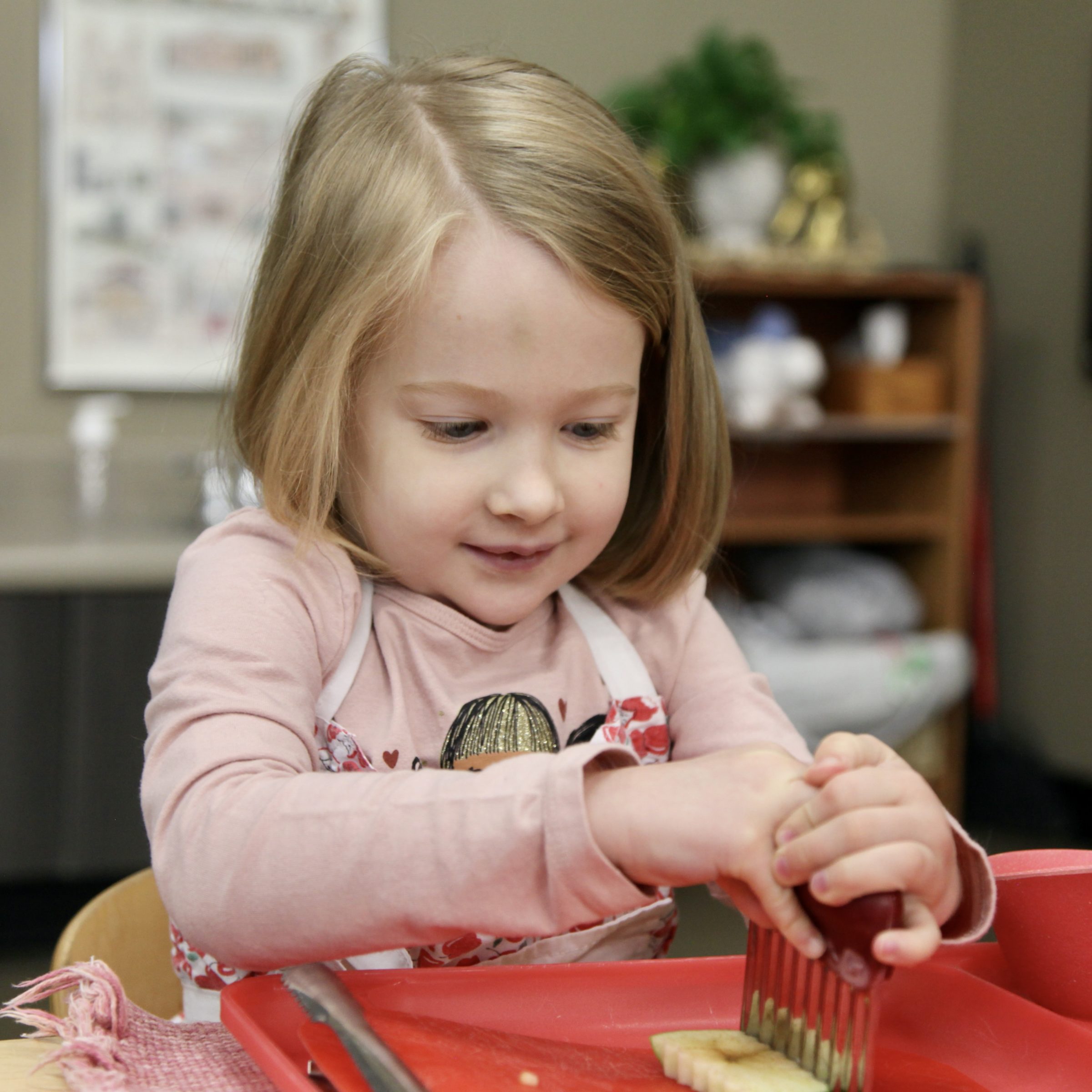The Kindergarten Year
Podcasts
We are preparing them not to need us.
Similar to the unspoken agreement a parent makes with their baby, yet so very different, when a child enters the classroom, we are making a promise — I will welcome you and love you and help you in the best way I possibly can, and send you on your way, prepared as best I am able.
We form strong relationships with these children and families, since they return year after year, for three or sometimes even four years. By the time a child is finished in the Primary classroom, we’ve absolutely seen them blossom.
Any Montessori is good. We believe wholeheartedly in this philosophy, that a year or two is better than none, that we will do good work with wonderful children as long as we have them. But there is a magic that happens that year they turn Five.
There are a few questions which routinely come up about Kindergarten in Montessori. We thought we thought we’d explore those more here.
– QUESTION AND ANSWER –
“Q: My child started when he was two-and-a-half. Hasn’t he completed the three years?”
The Primary Montessori program is a three year cycle, and we used to call this final year, the Third Year. However, that’s discounting the many children who begin in the Primary classroom when they’re two. For these children, there’s the possibility of being in the same classroom for four years.
What a gift! In this busy world, where things change moment by moment, the gift of space and time is incalculable. When we move at a child’s own pace, moving on from a place of confidence and mastery, a child might move through a series of materials over the course of a week, or over the course of a month, but we know they’re moving on from a place of strength.
If a child starts a year “earlier,” it’s not necessarily a substitute for staying for that Kindergarten year. There are certain things that we just need to prepare and wait for. Brain development that comes as a child ages, internal qualities which are cooking but not yet finished, the true grace and patience that shows only as a child begins to transition out of this space they’ve called home.
“Q: How many Kindergarteners do you have? Will she have any friends?”
A mixed-age environment is fundamental to Montessori Education. Younger children adapt to the classroom quickly because they want to be just like these older children.
In a mixed-age classroom, a child doesn’t see their age group as their peer group. These children have grown up together, been ushered along by older children, have helped out as much as they are able, have desperately looked forward to being The Big Kid.
Children in a Montessori classroom see their whole class, even the whole school, as their peer group. They look out for and look up to one another. Everyone is doing independent work, so there isn’t differentiation between ages — everyone is working to the highest level of their ability, making progress daily.
There is collaboration, the willingness to ask for help from an expert, some positive peer pressure pulling you onward, but there is not competition, teasing, bullying. Everyone is, has always been, doing exactly the right work for them, in this moment.
“Q: Our neighborhood school starts in Kindergarten. I don’t want my child to be the new kid and feel left out.”
No one wants to feel left out. We experience deferred empathy when watching a movie and seeing someone get picked last. Anyone who has experienced being new, knows the discomfort of this experience.
We also remember the friend who welcomed us in. Who showed us where to eat lunch, introduced us to their group of friends, remembered our name.
Because children return to the classroom year after year, we actively work on how to welcome a new friend. How to introduce yourself. The phrase, “Would you like to help her? She just doesn’t know.” emerges, as well as more patience we could ever imagine from a young person. This care, empathy, compassion is curated, and becomes a part of a child’s personality.
We learn how to make friends, how to be a friend, how to welcome, how to set limits. We learn how to function in society.
The truth is, we never know what the future holds. We think we’ve bought the house we’ll retire in, when suddenly family or a new job potential makes a move suddenly, joyfully, woefully necessary. And, without any anticipation, we’re New.
In that moment, that empathy, that willingness to try something new, to bravely say, “Hi. Want to play?” is the most critical. As it is when someone else is new, and we proudly look on our child walking up to the new, uncomfortable child saying, “Hi. Want to play?”
We have the opportunity to aid our children into becoming The Helper we relied on so heavily in our tender moment. What a gift.
“Q: What does the Kindergarten curriculum look like? Where do the Kindergarteners go?”
Unlike a traditional system, where curriculum for each grade is set and everyone is working with the same material, from Day One in a Montessori classroom, a child is provided with the material that is just right for her development in this moment. Just the right level of challenge, just the right invitation, just the right match.
The curriculum is the material on the shelf. Things are presented, mastered, repeated, used in different ways throughout the child’s time in the Primary classroom. Children stay in the same classroom where they’ve been since they started, but with new abilities, roles, and responsibilities.
There are things a child just isn’t typically ready for before that five-year-old year. Materials that require extraordinarily long periods of concentration; thinking across subject areas to make connections; task persistence lasting longer than one equation; self-control that sometimes adults struggle with.
These are materials a child has seen used since she was quite small, but, until now, only dusted, only observed. To give her this work too soon would do her a disservice. But now, she’s ready. It’s your turn. This big magical work, that Sam and Laura used to do, now I’m ready for this?? I’m the big kid?? They stand a little taller.
“Q: Will she be ready for first grade? Will she be too smart?”
The Primary Montessori curriculum meets the same criteria as Common Core standards. Additionally, since children are progressing at their own pace, only moving on when they have mastered a skill or concept, there is thorough, not cursory, understanding of material.
In fact, the end of the math curriculum in a Primary Montessori classroom is roughly equivalent to the end of a third grade math curriculum in a traditional setting. Which is not to say every child will get there; if we’re truly Following the Child at her own pace, we can’t make any such guarantee. But it is to say, there’s the possibility of getting there. A child will not run out of work.
This naturally leads to another question — will my child be too smart? Will he be ahead of his peers? Will he be bored and cause trouble in his new classroom?
There will be a transition, absolutely. It is different, sitting in one spot, doing the same thing as everyone else at the same time. However, when you understand something, practicing it more isn’t boring, it’s fun. It’s a game. How quickly can I finish these equations? Did I get them right, or do I need to practice something? Did I need a tool to figure these out, or do I know these in my head? Is there a friend I can help, or is this one of those times when the teacher needs to know who understands this, and who needs more time (also known as a test).
This joy of learning persists. New material is fun and exciting. Geometry proofs in high school are simply a puzzle to be sorted out, same as balancing chemical equations, or conjugating verbs in Italian. In Montessori, you learn how to figure things out, how to identify when you need help and where to look, how to wrestle with a problem just that little bit longer that leads to deep understanding.
“Q: We have to leave at some point, isn’t Kindergarten a good transition?”
There’s a lot of logic in that. It’s a natural time of transition. But it’s an elegant dinner without dessert and joyful conversation. It’s winning the championship and no celebration.
There is so much that comes together in the last year a child is in the classroom. Not least of which, they have been waiting for this for what feels to them like their whole lives. These big kids are their heroes, who knew everything, who took care of them, who helped them, who did the big, exciting, wonderful work. And now, that’s me.
It’s your turn. Your turn to help, to know, to understand. For many children, Kindergarten in a traditional school is their first academic setting, they’re learning how to learn, learning to sit still and be quiet, learning to problem solve and to be in community with others.
A child in a Montessori classroom has been doing this for the past two years. Moving to Kindergarten in a traditional school is in some ways a step back. It also leaves work unfinished. They might not get to work they’ve admired and cared for and dusted for several years, they might not be the biggest helper, the shoe tying expert.
However long we have them, we are grateful and glad and joyful, and we will foster and encourage and challenge and tend as best we are able, in the ways your child needs.
The simplest, truest way to say it, we’ve already said — Kindergarten Montessori is such a Gift.
This truly is a topic we’re never done with. We will never stop being thankful for and in awe of our oldest children. They are such a gift. For more on this topic, listen to this podcast.
Did you know we’re on iTunes? Subscribe to the podcast here!
Written by:
Charlotte Snyder




